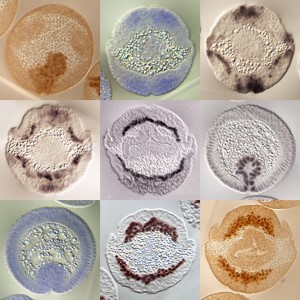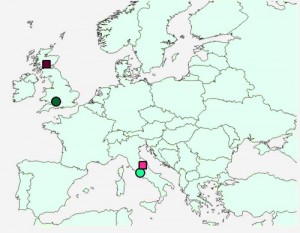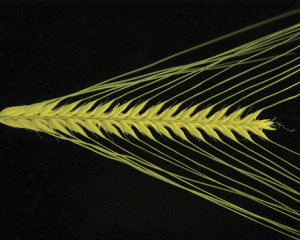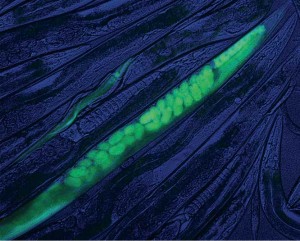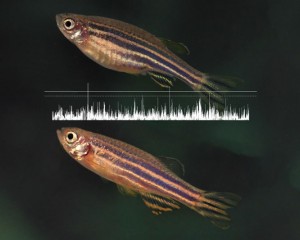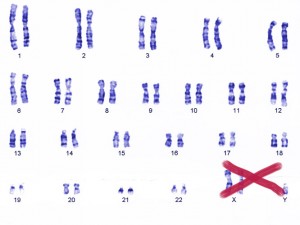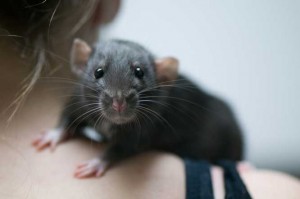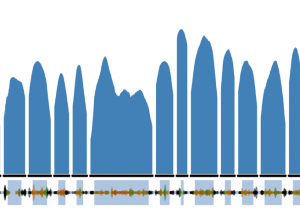Enter your address to receive notifications about new posts to your email.
Science & Publishing
-
Science & Publishing
New in G3: Malaria, scoliosis, and a Mexican tetra map
The new issue of G3 features Asian malarial mosquito control, familial idiopathic scoliosis, and a high-res genetic map for the Mexican tetra. Check out the Table of Contents below! Investigations Maternal Germline-Specific Genes in the Asian Malaria Mosquito Anopheles stephensi: Characterization and Application for Disease Control James K. Biedler, Yumin Qi, David Pledger, Anthony A.…
-
Science & Publishing
February GENETICS Highlights
The February issue of GENETICS is out now! Check out the highlights below of the full Table of Contents here. A neuroprotective function of NSF1 sustains autophagy and lysosomal trafficking in Drosophila, pp. 511–522 Daniel T. Babcock, Wei Shen, and Barry Ganetzky The accumulation of toxic or misfolded proteins is a feature shared by several neurodegenerative…
-
Science & Publishing
Mapping granny: ancestry inference for admixed individuals
Like all biological populations, human groups can’t be neatly divided. Real populations are connected to each other, and their borders are blurred by migration and mixing. But when inferring ancestry of an individual from genetic data, populations are typically simplified into tidy, discrete units. In the December issue of G3: Genes|Genomes|Genetics, Yang et al. describe…
-
Science & Publishing
January GENETICS Highlights
The January issue of GENETICS is out now! Check out the highlights below or the full Table of Contents here. Gene expression variation in Drosophila melanogaster due to rare transposable element insertion alleles of large effect, pp. 85–93 Julie M. Cridland, Kevin R. Thornton, and Anthony D. Long Cridland et al. report the first genome-wide analysis…
-
Science & Publishing
New G3 editors: de los Campos, Marshall, Myers, Ross-Ibarra, Slotte & Warburton
G3 welcomes new Associate Editors Gustavo de los Campos, Christian Marshall, Chad Myers, Jeff Ross-Ibarra, Tanja Slotte, and Marilyn Warburton! GUSTAVO DE LOS CAMPOS University of Alabama at Birmingham The academic interests of Gustavo de los Campos center on statistical learning methods with emphasis on applications in quantitative genetics. He completed two MS and a…
-
Science & Publishing
December GENETICS Highlights
The December issue of GENETICS is out now! Check out the highlights below or the full Table of Contents here. Ectopic centromere nucleation by CENP-A in fission yeast, pp. 1433–1446 Marlyn Gonzalez, Haijin He, Qianhua Dong, Siyu Sun, and Fei Li The mechanisms protecting the cell against formation of ectopic centromeres (neocentromeres) are poorly understood. Gonzalez…
-
Science & Publishing
Wild zebrafish sex: a lab mystery solved
Laboratory zebrafish hide a dirty little secret. Although the tiny fish have proven to be a vital model of vertebrate development and disease genetics, zebrafish reproduction—at least in the lab—has wildly variable outcomes. Offspring sex ratios can vary from extremely male-biased to extremely female-biased, depending on which breeding pairs serve as parents. The reason for…
-
Science & Publishing
ASHG Meeting Report: The X-factor in complex disease
One of the major risk factors for autoimmune diseases is being born with two copies of the X chromosome. For example, women—who typically carry two Xs—face around ten times the risk of lupus, while men with lupus are around 15 times more likely than the general population to carry two Xs and a Y (Klinefelter…
-
Science & Publishing
The differences between fierce and friendly rats
In the early 1970s, a couple of hundred wild rats near the Siberian city of Novosibirsk were rounded up by scientists for an ambitious experiment to understand how animals evolve during domestication. Dimitry Belyaev and his colleagues—known for their related project on domesticating foxes—split the rats into two groups. With one group, the researchers tried to replicate…
-
Science & Publishing
ASHG Meeting Report: A guide to the Exome Aggregation Consortium data
With genomic data from hundreds of thousands of people accumulating, geneticists are now able to mine these data for very rare, but very informative genetic variants, including loss-of-function alleles. For example, across the enormous “reference set” of human exomes announced at the 2014 American Society for Human Genetics Meeting, on average there’s a variant every six bases. In the first of our reports from the ASHG…
-
Science & Publishing
New in G3: Worm RNAi tools, oyster sex & primate lice endosymbionts
Oyster sex, a watermelon map, coconut transcriptome, and a primate lice endosymbiont genome in the new issue of G3 online now! Also tools for C. elegans RNAi and predictive histone acetylation patterns. Check out the Table of Contents below: G3: Genes|Genomes|Genetics November 2014 Distinct and Predictive Histone Lysine Acetylation Patterns at Promoters, Enhancers, and Gene Bodies…


